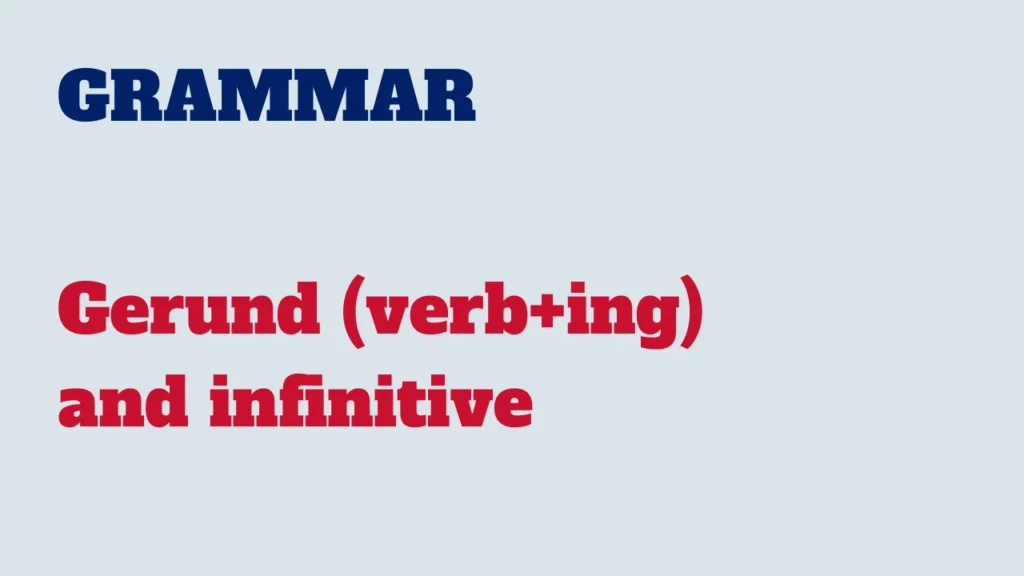Understanding the difference between gerunds and infinitives is crucial for constructing accurate and meaningful sentences in English.

Both gerunds and infinitives serve as verb forms, but they have distinct roles and functions.
Gerunds (Verb + -ing):
A gerund is the -ing form of a verb and functions as a noun in a sentence.
Examples:
Swimming is my favorite sport. (Here, “swimming” acts as the subject.)
She enjoys reading novels. (Here, “reading” is the object of the verb “enjoys.”)
Common uses of gerunds:
As the subject of a sentence:
“Skiing is a popular winter activity.”
As the object of a verb:
“I enjoy dancing.”
As the object of a preposition:
“She is good at painting.”
Infinitives (to + base form of a verb):
An infinitive is the base form of a verb preceded by “to.” It can function as a noun, adjective, or adverb in a sentence.
Examples:
She likes to dance. (Here, “to dance” acts as the direct object.)
I have a book to read. (Here, “to read” functions as an adjective modifying “book.”)
Common uses of infinitives:
As the subject of a sentence:
“To travel broadens the mind.”
As the object of a verb:
“She wants to sing.”
Gerunds vs. Infinitives:
Use gerunds:
After certain verbs (enjoy, like, dislike):
“I like swimming.”
After prepositions:
“She succeeded by working hard.”
Use infinitives:
After certain verbs (want, need, hope):
“I want to learn.”
After adjectives:
“It’s easy to understand.”
Common mistakes to avoid:
Confusing gerunds with infinitives:
Incorrect: I enjoy to swim.
Correct: I enjoy swimming.
Omitting “to” with infinitives:
Incorrect: She decided dance.
Correct: She decided to dance.
Understanding when to use gerunds and infinitives will enhance your ability to express actions and ideas accurately. Practice incorporating them into your sentences to solidify your grasp on their usage. Happy learning!



